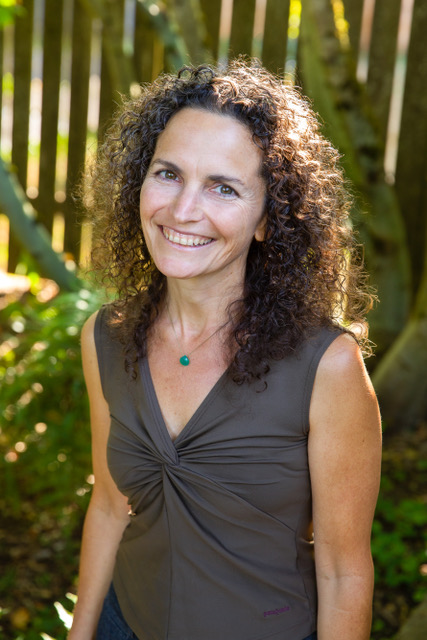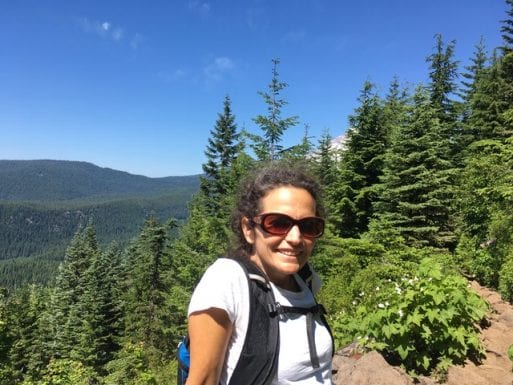
Today SevenPonds concludes its two-part interview with Susan Wilmoth, a nationally certified acupuncturist whose private practice is based in east Portland, Oregon. Besides treating patients suffering from pain and stress in order to get them back to their active lives, Susan provides end-of-life care for patients at both Providence Hospice and Kindred Hospice. After speaking with her it is clear that, though the goals change with this fragile clientele, the rewards are great.
Susan is a graduate of Purdue University and the Oregon College of Oriental Medicine and holds a Masters Degree in Acupuncture and Oriental Medicine from the four-year post-graduate program at OCOM.
Editor’s note: This interview has been edited for length, clarity and readability.
Laura B. Hayden: Welcome back Susan. Last week you were talking about how acupuncture can be useful in end-of-life care. Can you talk to me about how working with hospice patients is different than working with patients who come to your private practice?
Susan Wilmoth: At my private practice, a patient will come in with, let’s say, tennis elbow. I aim to get some blood flowing into those tendons so that the pain is gone and the patient gets to play tennis again. Hospice work is not curative care — so the goals become really different.
Most of the time I get a referral for a hospice patient with specific symptoms like — “See Mary for four weeks for nausea.” So the goal is to ease that symptom to improve the patient’s quality of life. But, part of the beauty of acupuncture is that no matter what you treat, acupuncture will actually influence the nervous system. It stimulates the brain and signals it to release endorphins, which makes the patient feel good.
Laura: So, while you can’t expect to cure hospice patients, you focus on improving their well-being.
Susan: Yes! Acupuncture helps the body move out of a sympathetic fight or flight response to the parasympathetic side of the nervous system. This helps relax the patient. I think helping hospice patients get into that more relaxed state is one of the most valuable things I can do for them. Feeling relaxed in their body gives them access to a sense of wholeness or well being.
I recently had a patient whose whole abdomen was full of tumors. She was in a terrible pain crisis. And at the end of her treatment, she said “You know the pain is still there but I feel like I am relaxed around it a little bit. It’s like my pain is still a seven-out-of-ten instead of a nine, but I feel the best I’ve felt in a really long time because I feel like I can relax around the pain a little bit.”

In her leisure time Susan enjoys getting outdoors.
Laura: That’s remarkable. Would you say the treatment helps put the failing patient more in control?
Susan: Some people may feel in control to a limited degree and some feel a significant lack of control. Most people experience a lot of involuntary changes in the late stages of a disease process or as their bodies’ systems are shutting down— there is, by nature, a lack of control. These experiences would leave any of us feeling a lack of control.
I’m touched by that vulnerability every day, along with the incredible courage they bring to that when they know their body systems are shutting down and they are not in control –like when people still have a sense of humor during their final moments.
Laura: That’s such a unique patient/practitioner experience. How long does a treatment session last?
Susan: Part of the beauty of an acupuncture treatment is that there is this time after I gently insert the needles to the points I think are going to help the most. They need time to do their work, so we’re just there together for 25 or 30 minutes with the needles in. I may be doing acupressure on the patient’s feet while the needles are in some other area of the body. Sometimes people fall asleep during that time and sometimes people really open up and share a lot.
Laura: I bet you’re a good listener when they do.
Susan: Oh yes – it is such a reflective time if people have the cognitive capacity. I feel very lucky to be able to practice a type of medicine that actually allows me to share quality time with no real agenda. I think patients are hungry for that, especially at that stage.
Laura: Is there anything you’d like to add about your work with hospice patients?
Susan: Hospice patients have been through so much. They’ve been poked and prodded. Some of them have had extensive invasive treatment and they are relieved that is over. So for me to be able to come in with my teeny, teeny needles that you don’t even feel or my acupressure hands-on work …. to come in and provide a type of care that actually is soothing and feels good is so fulfilling. People enjoy this care.
Laura: Thank you for bringing that out Susan, and for the time you put into this interview.
If you missed Part One of our interview with Susan Wilmoth please check back here.

 How Can Acupuncture Improve End-of-Life Care?
How Can Acupuncture Improve End-of-Life Care?


 Debating Medical Aid in Dying
Debating Medical Aid in Dying
 “Help Me, Helen”
“Help Me, Helen”















